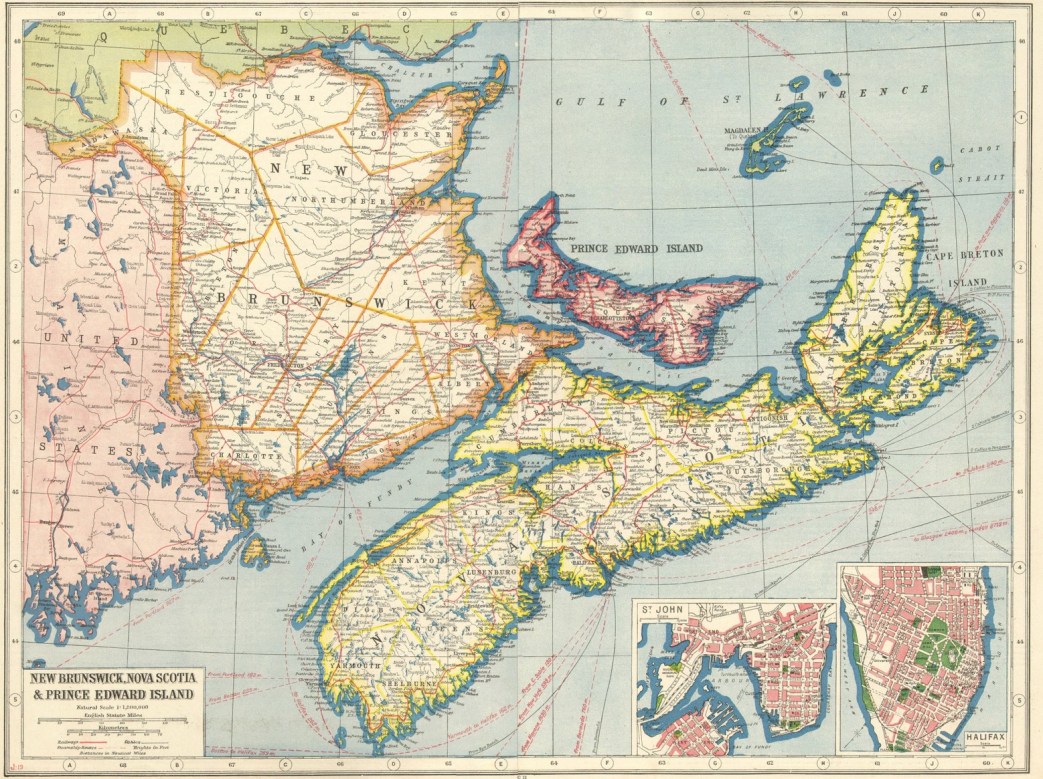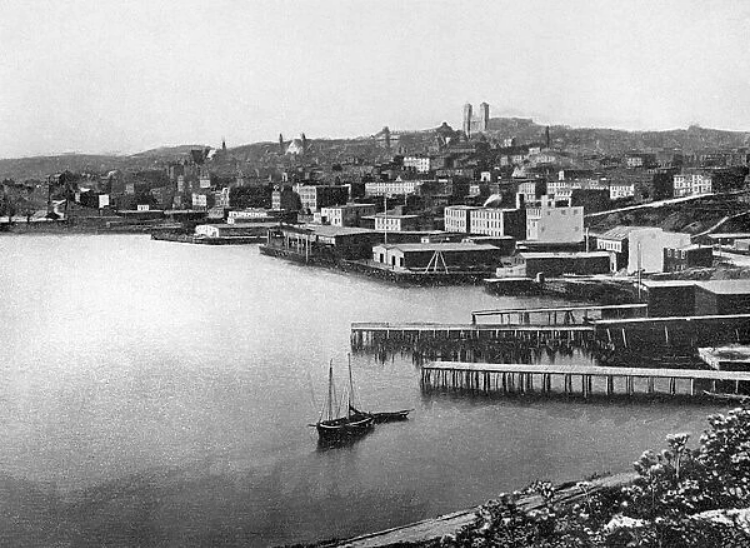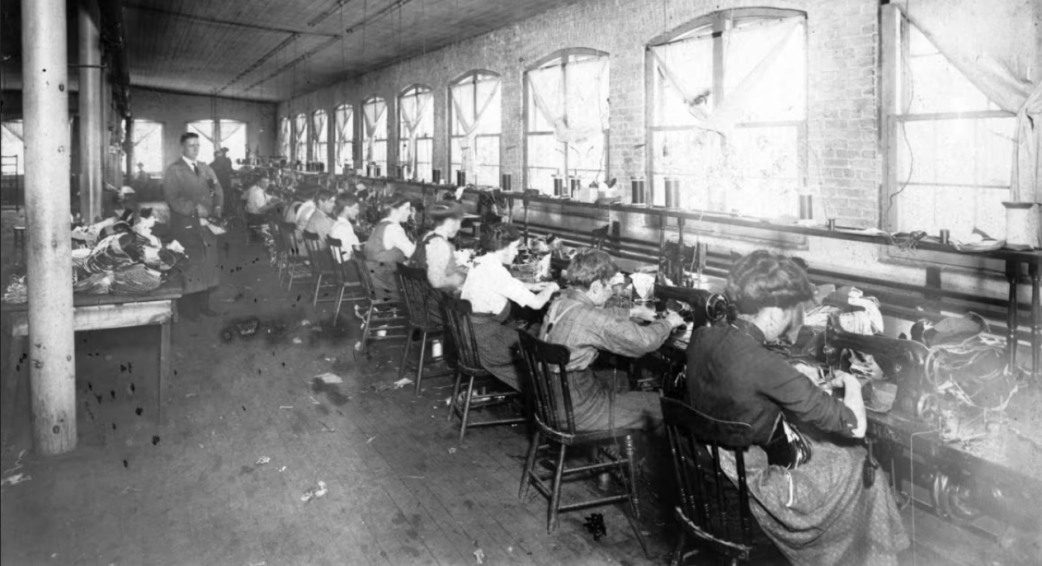Henry Harvey Stuart, a Socialist Labor Party activist in Harcourt, New Brunswick, provides this valuable history of early socialism in Canada’s Maritime Provinces.
‘Socialism in Eastern Canada’ by Henry Harvey Stuart from The Weekly People. Vol. 15 No. 28. February 24, 1906.
The three eastern or maritime provinces of Canada had in 1901 a population of nearly 900,000, distributed as follows: New Brunswick, 331,000; Nova Scotia, 459,000; and Prince Edward Island, 103,000. The areas are 28,000, 20,000 and 2,000 square miles, respectively.
Prince Edward Island’s industry is almost wholly agricultural and fishing. It has no Socialist organization of any kind and, so far as the writer knows, never had.
The people of New, Brunswick and Nova Scotia live mainly by farming, lumbering, fishing and mining, most of the fishing and the bulk of the mining being carried on in Nova Scotia. In both provinces manufacturers are in their infancy.
New Brunswick industries being, as a rule, conducted on a small scale, there has till very lately been little or no union organization outside the chief city of St. John, except among the railway and telegraph workers, who are generally organized in affiliation with the A. F. of L
Last November, the St. John ‘Longshoremens’ Association notified the steamship companies that after the nineteenth of that month they would have to pay the union members thirty-five cents per hour for all work instead of forty for loading wheat and thirty for all others, as before. Work being so uncertain, that laborers’ weekly wages. are quite low; but the companies refused to increase the rate, and imported workmen from Montreal to take the strikers’ places. So many came, or offered to come, from Montreal, that the strikers gave in and returned to work on the old terms on the 29th. The strike breakers got only a fortnight’s wages for their willingness to help the capitalists enforce their terms on St. John.
In December last, the St. John branch of the Typographical Union demanded an eight-hour day, which the newspaper offices granted. The management of one, however, dismissed the secretary of the union on the ground of having too many employes. The union claimed. that he was dismissed because of his official position, and that if any man had to go, it should have been the one last hired. So they struck. But the writing staff, engineers, etc., remained at work, the paper was issued, and the strikers. returned to work–all but the man originally dismissed. To emphasize their victory, the management promoted the one last hired to the foremanship.
These two incidents go to show the need of the I.W.W. here. Had all men in any way connected with the shipping business struck in aid of the ‘Longshoremen, or held themselves ready to strike if needed, the laborers would have won. So with the printers. Nothing but a union of the unions–a union that takes in all workers of an industry–can hope to win; and then only when the workers of all other industries stand ready to help. And even such a union would be of no permanent benefit until it VOTED as a unit for the Co-operative Commonwealth. Many St. John men are now thinking, seriously along the lines of industrial unionism; and an organizer would find lots of material there.
The chief industrial centre of the Maritime provinces is the coal mining regions of Nova Scotia. There are about 12,000 coal miners in that province, about half of whom are employed by the Dominion Coal Company, who own the collieries of the Glace Bay district. Last fall this company secured a three years’ contract with its men, who are members of the Provincial Workmen’s Association (the miners’ union), under a schedule which keeps the earnings of a large percentage of the men below $1.50. a day.
The first Socialist organization in the eastern part of Canada was an S.L.P. section founded by A.M. Muirhead in Halifax in March, 1899. It developed considerably activity, and for a while. maintained a lecturer and published a paper. But, like the United States movement, it unfortunately split over the S.T. & L.A. question, and finally broke up.
Some six or seven years ago, Fred Lighter, a Jewish member of the S.L.P., settled in Glace, Bay, and has ever since sowed the seeds of Socialism by a plentiful distribution of the right kind of literature. In 1900, D.N. Brodie, an ex-member of Halifax S. L. P., also settled there. Alex Mackinnon, Alex and Hugh MacMullin and others who had learned Socialism in the West, took up the propaganda. Shortly before the Dominion election of 1904, the more discontented of the miners of the Glace Bay district formed an Independent Labor Party, which, although speaking of “a minimum wage,” came out for “public ownership and operation of mines, railways, telegraphs, telephones, lighting, water works, and all producing or distributing undertakings and utilities, which, from their nature, tend to become monopolies.” The candidate, Stephen B. MacNeil, was at first endorsed, but soon opposed by the Roman Catholic authorities. He polled 869 votes on election day, November 4th.
At the close of this campaign, the Glace Bay Socialists, who had given MacNeil a hearty, though entirely independent support, cut loose from the I.L.P. and organized a Socialist Club on November 22, 1904. Alex. MacKinnon is organizer and good propaganda work is being done. It has not yet affiliated with either the S.P. or S.L.P. F. Lighter remains a member of the S.L.P. In 1905, another club was organized at Sydney Mines, John Taylor, secretary. Both these clubs strongly favor the I.W.W.
On November 24, 1904, appeared the first issue of the “Provincial Workman,” owned by W.J. Douglass, the capitalist proprietor of the Glace Bay “Daily Gazetteer,” who had supported MacNeil’s candidacy for Parliament. The “Workman” was designed to be the P.W.A. organ, and P.F. Lawson, who had been prominent in the I.L.P., was chosen editor. Lawson opposed Moffatt in signing away the miners’ rights for three. years, introduced Socialism into the paper, and brought C.O. Sherman, president of the I.W.W., to address. the P.W.A. convention, in Halifax, September, 1905. For these dire offenses against pure and simpledom, Lawson was crowded out. On October 31, 1905: he resigned the editorship, and on November 7 joined the Glace Bay Socialist Club. He is now engaged in the I.W.W. interests in the United States.
Up to ten years ago, very little Socialist literature had ever found its way into New Brunswick. Socialism was mentioned only to be ridiculed and condemned. Socialist propaganda was dangerous. The writer had the honor of being dismissed from his position in 1899 because of circulating the Weekly People, placing Socialist books in the Sunday School library, and talking Socialism in public places. Since the great increase in the German Socialist vote in 1903 and in that of the United States in 1904, our newspapers have been compelled to notice the movement, and the public has, with increasing knowledge, grown a little more tolerant of the propaganda.
The first essay at Socialist organization in New Brunswick was of the Fabian variety, W. Frank Hathenay, a wholesale merchant and something of a writer along economic lines, organized the St. John Fabian League in May, 1901. Its avowed object was: “The study of all questions arising between capital fand labor, the free discussion of economic problems, such as old age pensions, living wage legislation, civic ownership of public utilities, government ownership of railroads and telegraphs, and the propagation of all ideas that tend to lighten the toil, promote the welfare and elevate the social and moral conditions of the people.” Its platform is certainly socialistic, but scarcely Socialist.
The Fabian League advocated Socialism of the one step-at-a-time kind, and was soon captured by the pure-and-simple union elements. On February. 28, 903, Hatheway stood for election to provincial parliament as a fusion candidate on Conservative and Labor platforms. He was, of course, defeated. The League demanded an Employers’ Liability Act. The government promised one next year, and in 1904 introduced an act which, among many other things too numerous to mention, provided that no child under sixteen years of age should be employed in a factory, UNLESS HE WAS STRONG AND HEALTHY AND HIS WORK WAS NECESSARY TO SUPPLY HIS PARENTS NEEDS. Even this bill was not pushed. A commission of five, of whom THREE WERE EMPLOYERS OF LABOR, was appointed to draft a factory act; and one, perfectly harmless from the employers’ standpoint, was passed in 1905. Several months ago the Fabian League adjourned its meetings indefinitely and has not met since.
Fredericton Socialist League (since April 1, Fredericton Local No. 1 of New Brunswick, Socialist party of Canada) was organized on July 28, 1902, and is the only Socialist local or section in New Brunswick. For nearly four years it has been an active factor in distributing. Socialist literature, and in each year finding the soil of the province more receptive and encouraging. Martin Butler, recording secretary of the local, publishes “Butler’s Journal,” a monthly, which has been propagating revolutionary Socialism for several years.
Socialism in New Brunswick has progressed to the point of calling out the active hostility of the Roman Catholic Church. Francois M. Daigle lectured against, Socialism in Moncton, March 19, 1905; and on January 21, 1906, Bishop Casey in St. John thundered against it from his pulpit, declaring that “the workman cannot obtain the necessaries of life, much less its comforts, without the wages paid him by the employer,”
Socialism in New Brunswick and the United States has come to stay; and the door for the new unionism is wide open. Factional spirit is weak here, and Socialists of both shades of thought are longing for the day-surely not now far distant-when the S.P. and the S.L.P. will be marching together to the early conquest of the public powers.
New York Labor News Company was the publishing house of the Socialist Labor Party and their paper The People. The People was the official paper of the Socialist Labor Party of America (SLP), established in New York City in 1891 as a weekly. The New York SLP, and The People, were dominated Daniel De Leon and his supporters, the dominant ideological leader of the SLP from the 1890s until the time of his death. The People became a daily in 1900. It’s first editor was the French socialist Lucien Sanial who was quickly replaced by De Leon who held the position until his death in 1914. Morris Hillquit and Henry Slobodin, future leaders of the Socialist Party of America were writers before their split from the SLP in 1899. For a while there were two SLPs and two Peoples, requiring a legal case to determine ownership. Eventual the anti-De Leonist produced what would become the New York Call and became the Social Democratic, later Socialist, Party. The De Leonist The People continued publishing until 2008.
PDF of issue: https://www.marxists.org/history/usa/pubs/the-people-slp/060224-weeklypeople-v15n48-unityconf4.pdf




